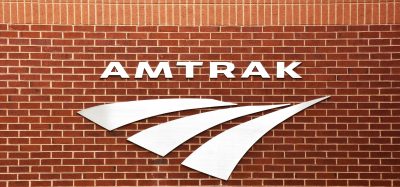Keeping passengers informed during disruption
Posted: 20 February 2013 | | No comments yet
British transport company Go-Ahead is one of the country’s major transport groups. Its bus and rail companies serve over one billion passengers a year, or 2.7 million people a day. The Group has 23,000 staff working across its operations which stretch from Plymouth in the south west to Newcastle in the north east. In an interview for Global Railway Review, Go-Ahead’s Managing Director – Rail Development, Alex Hynes, explains the importance of providing accurate and efficient Real-Time Passenger Information systems and processes.
Go-Ahead runs three rail franchises through Govia, the joint venture partnership between Go-Ahead and Keolis. Between them, the three businesses – Southern, which includes Gatwick Express, Southeastern and London Midland – are responsible for 30% of rail passenger journeys and carry more commuters than anyone else.
“We are the busiest operator in the UK and one of the busiest in Europe,” said Alex. “We run 5,000 services a day, so keeping people informed about what’s happening on our networks is a vital part of our offer to passengers. It’s also crucial that we have systems and processes in place which enable us to update our passengers during times of disruption. To achieve this we have to keep abreast of changing passenger requirements and the latest tech – nological developments.”
The way in which information is provided to passengers has changed significantly in recent years. Ten years ago, customers relied on paper timetables and service update boards at stations. There was little or no on-train communications and public address systems were scarce. Passengers used the telephone to contact call centres for information about their service.
Since then, the information landscape has altered dramatically. Passengers can access realtime online journey planners and stations have digital screens with live updates. National Rail Enquiries (NRES) can be contacted via telephone and the web, and handheld devices give passengers instant access to live departure boards. Stations and trains now provide auto – matic announcements to keep people informed. Operators have also focused on giving staff the right tools to do the job – equipping them, for example, with Blackberry handsets through which they can also access information to pass on to passengers.
These developments provide a solid base for operators and make it easier to communicate when things are going well. But the statistics speak for themselves – while overall customer satisfaction has steadily risen over the past 10 years (from 73% to 84%) dealing with delays remains a challenge: Passengers score operators in London and the South East fairly low on that count – the Spring 2012 National Passenger Survey revealed a satisfaction score of only 35%.
However, the industry has responded to the challenge. In November 2009, a new code of practice was issued aimed at setting out best practice in delivering Passenger Information During Disruption (PIDD).
The severe weather in December 2010 badly disrupted some rail services and as a result the Office of Rail Regulation proposed new powers to ensure improvements to passenger information. Those new obligations came into force in autumn 2011.They aim to help train operators deliver a co-ordinated approach to the provision of passenger information during major delays and disruption in an appropriate and consistent manner.
British transport company Go-Ahead is one of the country’s major transport groups. Its bus and rail companies serve over one billion passengers a year, or 2.7 million people a day. The Group has 23,000 staff working across its operations which stretch from Plymouth in the south west to Newcastle in the north east. In an interview for Global Railway Review, Go-Ahead’s Managing Director – Rail Development, Alex Hynes, explains the importance of providing accurate and efficient Real-Time Passenger Information systems and processes. Go-Ahead runs three rail franchises through Govia, the joint venture partnership between Go-Ahead and Keolis. Between them, the three businesses – Southern, which includes Gatwick Express, Southeastern and London Midland – are responsible for 30% of rail passenger journeys and carry more commuters than anyone else. “We are the busiest operator in the UK and one of the busiest in Europe,” said Alex. “We run 5,000 services a day, so keeping people informed about what’s happening on our networks is a vital part of our offer to passengers. It’s also crucial that we have systems and processes in place which enable us to update our passengers during times of disruption. To achieve this we have to keep abreast of changing passenger requirements and the latest tech - nological developments.” The way in which information is provided to passengers has changed significantly in recent years. Ten years ago, customers relied on paper timetables and service update boards at stations. There was little or no on-train communications and public address systems were scarce. Passengers used the telephone to contact call centres for information about their service. Since then, the information landscape has altered dramatically. Passengers can access realtime online journey planners and stations have digital screens with live updates. National Rail Enquiries (NRES) can be contacted via telephone and the web, and handheld devices give passengers instant access to live departure boards. Stations and trains now provide auto - matic announcements to keep people informed. Operators have also focused on giving staff the right tools to do the job – equipping them, for example, with Blackberry handsets through which they can also access information to pass on to passengers. These developments provide a solid base for operators and make it easier to communicate when things are going well. But the statistics speak for themselves – while overall customer satisfaction has steadily risen over the past 10 years (from 73% to 84%) dealing with delays remains a challenge: Passengers score operators in London and the South East fairly low on that count – the Spring 2012 National Passenger Survey revealed a satisfaction score of only 35%. However, the industry has responded to the challenge. In November 2009, a new code of practice was issued aimed at setting out best practice in delivering Passenger Information During Disruption (PIDD). The severe weather in December 2010 badly disrupted some rail services and as a result the Office of Rail Regulation proposed new powers to ensure improvements to passenger information. Those new obligations came into force in autumn 2011.They aim to help train operators deliver a co-ordinated approach to the provision of passenger information during major delays and disruption in an appropriate and consistent manner.
British transport company Go-Ahead is one of the country’s major transport groups. Its bus and rail companies serve over one billion passengers a year, or 2.7 million people a day. The Group has 23,000 staff working across its operations which stretch from Plymouth in the south west to Newcastle in the north east. In an interview for Global Railway Review, Go-Ahead’s Managing Director – Rail Development, Alex Hynes, explains the importance of providing accurate and efficient Real-Time Passenger Information systems and processes.
Go-Ahead runs three rail franchises through Govia, the joint venture partnership between Go-Ahead and Keolis. Between them, the three businesses – Southern, which includes Gatwick Express, Southeastern and London Midland – are responsible for 30% of rail passenger journeys and carry more commuters than anyone else.
“We are the busiest operator in the UK and one of the busiest in Europe,” said Alex. “We run 5,000 services a day, so keeping people informed about what’s happening on our networks is a vital part of our offer to passengers. It’s also crucial that we have systems and processes in place which enable us to update our passengers during times of disruption. To achieve this we have to keep abreast of changing passenger requirements and the latest tech – nological developments.”
The way in which information is provided to passengers has changed significantly in recent years. Ten years ago, customers relied on paper timetables and service update boards at stations. There was little or no on-train communications and public address systems were scarce. Passengers used the telephone to contact call centres for information about their service.
Since then, the information landscape has altered dramatically. Passengers can access realtime online journey planners and stations have digital screens with live updates. National Rail Enquiries (NRES) can be contacted via telephone and the web, and handheld devices give passengers instant access to live departure boards. Stations and trains now provide auto – matic announcements to keep people informed. Operators have also focused on giving staff the right tools to do the job – equipping them, for example, with Blackberry handsets through which they can also access information to pass on to passengers.
These developments provide a solid base for operators and make it easier to communicate when things are going well. But the statistics speak for themselves – while overall customer satisfaction has steadily risen over the past 10 years (from 73% to 84%) dealing with delays remains a challenge: Passengers score operators in London and the South East fairly low on that count – the Spring 2012 National Passenger Survey revealed a satisfaction score of only 35%.
However, the industry has responded to the challenge. In November 2009, a new code of practice was issued aimed at setting out best practice in delivering Passenger Information During Disruption (PIDD).
The severe weather in December 2010 badly disrupted some rail services and as a result the Office of Rail Regulation proposed new powers to ensure improvements to passenger information. Those new obligations came into force in autumn 2011.They aim to help train operators deliver a co-ordinated approach to the provision of passenger information during major delays and disruption in an appropriate and consistent manner.
PIDD in action
The best practice guidelines have proved invaluable – for example, in January 2012, Southeastern services were affected by high winds. The company quickly loaded high impact disruption information on their website homepage. The attention grabbing announce – ments were subsequently updated as more information and emerging train plans became known. The company also used ‘rainbow’ boards on their website and at stations to show which routes were affected and posted photographs on the web to illustrate why trains were unable to run.
Staff manually updated the CIS to provide local information on service alterations, and Customer Information Managers were on site at the worst affected stations to assist with ‘live’ information. New long-line public address, which was not officially live, was used ahead of schedule to inform passengers of disruption and rail replacement bus services.
Use of social media
Social media has proved a useful tool for Govia’s train operating companies. All three franchises now use Twitter to communicate with passengers – London Midland has 28,000 followers and has sent nearly 140,000 tweets. The company started using Twitter three years ago with a strategy aimed at providing service information in a brief but engaging way. The company receives regular feedback from followers impressed by the company’s pro active approach to keeping them informed. This improved advocacy has been translated into improved passenger satisfaction scores, with London Midland’s score rising in just one year from 32% to 49% – 12 points ahead of the national average.
Alex commented: “Twitter has really transformed the way London Midland interacts with passengers during delays. Information is targeted to the passenger and people aren’t bombarded with reams of detail that simply isn’t relevant to them. Social media has proved a huge success and London Midland has been recognised by the rail industry for its pioneering work, winning the ‘Putting Passengers First’ award at the last two National Rail Awards.”
Passengers’ desire for more ‘personalised’ information is one of the key findings to come out of a piece of research Go-Ahead commissioned in partnership with Passenger Focus in 2012. The Future of Transport research revealed that people felt empowered when more individual – ised information was made available to them.
“This research suggests that the days of the timetable might be numbered, as people seek to access only the specific information they need so they can get around in a seamless way and continue to be productive while using public transport,” said Alex.
Alex believes that the industry has moved forward significantly, but believes there is no room for complacency. “Passengers’ need for rapid and accurate information will continue. It’s vital that we continue to listen to what our passengers want and evolve the way we deal with information in line with people’s changing expectations. Information channels will continue to expand and operators must adapt to that if we want to continue to be successful.”
Biography
Alex Hynes was appointed Managing Director – Rail Development in January 2012. He joined Go-Ahead in 2005, initially as a member of its bid team. More recently, Alex served as Commercial Director at London Midland between 2007 and 2011. Prior to joining Go-Ahead, Alex worked in rail consultancy and regulation. In January 2013, Alex joined the Editorial Board of Global Railway Review.
OUT NOW: The Definitive Guide to Rail’s Digital Future
The rail industry is undergoing a digital revolution, and you need to be ready. We have released our latest market report, “Track Insight: Digitalisation.”
This is not just another report; it’s your comprehensive guide to understanding and leveraging the profound technological shifts reshaping our industry. We move beyond the buzzwords to show you the tangible realities of AI, IoT, and advanced data analytics in rail.
Discover how to:
- Optimise operations and maintenance with real-time insights.
- Enhance passenger services through seamless, high-speed connectivity.
- Leverage technologies like LEO satellites to improve safety and efficiency.
Featuring expert analysis from leaders at Nomad Digital, Lucchini RS, Bentley Systems and more, this is a must-read for any rail professional.







